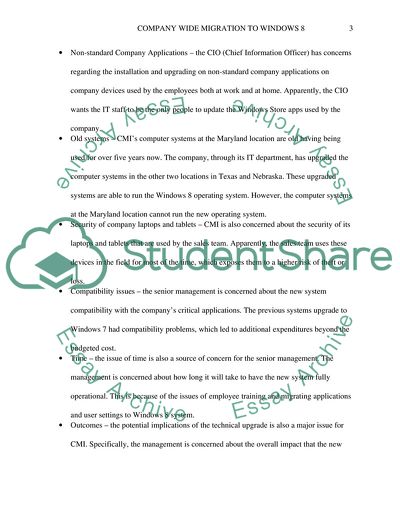Cite this document
(Plan of Implementing the Windows 8 Upgrade in Crescent Manufacturing Inc Case Study Example | Topics and Well Written Essays - 2250 words, n.d.)
Plan of Implementing the Windows 8 Upgrade in Crescent Manufacturing Inc Case Study Example | Topics and Well Written Essays - 2250 words. https://studentshare.org/information-technology/1853050-company-wide-migration-to-windows-8
Plan of Implementing the Windows 8 Upgrade in Crescent Manufacturing Inc Case Study Example | Topics and Well Written Essays - 2250 words. https://studentshare.org/information-technology/1853050-company-wide-migration-to-windows-8
(Plan of Implementing the Windows 8 Upgrade in Crescent Manufacturing Inc Case Study Example | Topics and Well Written Essays - 2250 Words)
Plan of Implementing the Windows 8 Upgrade in Crescent Manufacturing Inc Case Study Example | Topics and Well Written Essays - 2250 Words. https://studentshare.org/information-technology/1853050-company-wide-migration-to-windows-8.
Plan of Implementing the Windows 8 Upgrade in Crescent Manufacturing Inc Case Study Example | Topics and Well Written Essays - 2250 Words. https://studentshare.org/information-technology/1853050-company-wide-migration-to-windows-8.
“Plan of Implementing the Windows 8 Upgrade in Crescent Manufacturing Inc Case Study Example | Topics and Well Written Essays - 2250 Words”. https://studentshare.org/information-technology/1853050-company-wide-migration-to-windows-8.


